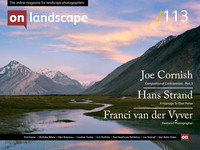A homage to Eliot Porter

Hans Strand
Hans Strand is an internationally recognised photographer who has received numerous awards for his work and published three books. He lives near Stockholm in Sweden.
In 1990 I visited the Ansel Adams Gallery in Yosemite National Park as I was eager to see some powerful American landscape photographs. In their collection of work by the American masters, they had several dye transfer prints by Eliot Porter and for very decent amount of money. However at this time in my life I was not ready for Eliot Porter; I simply did not appreciate the subtle content of his intimate landscapes.
I was just too naive and too much of a freshman to understand the quiet whisperings in Porter's photography. Like many young photographers it was the dramatic landscapes in ”Hallelujah Light!” which attracted me. Hence my disappointment.
Today I have turned 60, which today is supposed to be the new 40 (I doubt that personally) and I have matured in the 'intimate' direction. I really wish I had bought one of Porters dye transfers that day in Yosemite 26 years ago as intimate landscapes have over the years become my own passion. I am also no longer having to wait for dramatic sunrises, instead I prefer to spend these early hours in my bed.
Chaotic images of stones, wood and water in grey weather are my favourite subjects nowadays. Quite often I am asked what I see in a messy bit of shrubbery or in a slope of rubble. My answer is 'complexity'. It is about finding a smart distribution of objects and geometry inside the frame of the viewfinder. It is a demanding and intellectual process which needs your full concentration. The classic ”making order from chaos” is not for everybody. You need to be at one with the landscape around you.
Today, when people are mostly living in cities and nature is something they only have contact with during weekends or holidays, any relation to the wild landscape is naive and far from relaxed. It was the relaxed and close relation to mother nature which was the expression in Eliot Porter's photography. At one with the elements around him and therefore able to find backbone and geometry in the untamed chaos that for some people was not powerful enough to be interesting. Even for Porter understanding from the outside was a problem.
Once, when Porter had a slide show for National Geographic, he was completely misunderstood by their editors and he left the building without getting published. A total blunder by National Geographic in my opinion.
For those of you who are interested to search his work out, you should try to find his book ”Natures Chaos”. To better understand his work, we have to remember that he was working with early generation colour film and not at all with the same quality film as you can find today. Therefore you might find his photographs a bit strange in colour, but at the same time the are really special.
Down below I will show you some of my own images made as a homage to this icon photographer
”Rolling Stones #1”, Trysunda Island, Ångermanland, Sweden, July 2014.
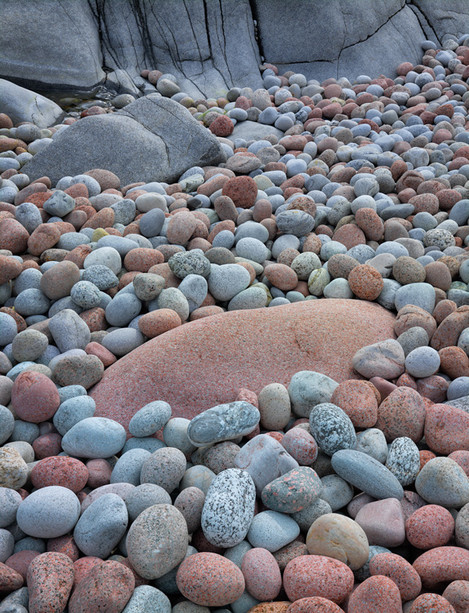
”Rolling Stones #2”, Singö, Uppland, Sweden, October 2014.
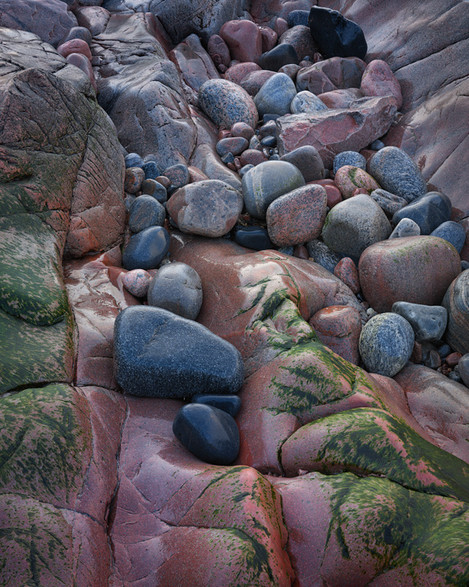
Another rock and pebbles shot. This one from the coast north of Stockholm. It was made during a two day workshop. We were spending a whole afternoon on the coast and we did not really find anything that triggered us to take pictures. However just before sunset it started to rain. The rock got wet, and the landscape went through a dramatic transformation in colour. The thin layer of water saturated the colours to fantastic levels. All of a sudden we had more rock & pebble landscapes than we could handle. Also here I used my Hasselblad H3DII-50 with HC50mm II lens and a tilt/shift-adapter. This to get everything in focus in one shot.
”Norwegian Wood”, Finnmark, Norway, April 2006.
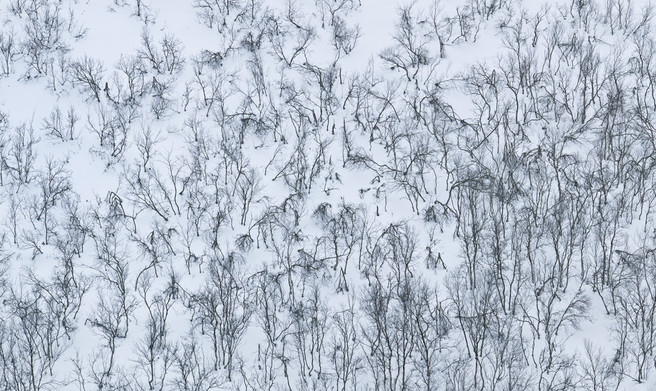
In April 2006 I traveled around in Finnmark on the northern tip of Norway with my friend and Norwegian photographer Bård Løken. He showed me some fantastic landscapes. This mountain wall with birch trees spoke to me like a calligraphy with Chinese letters. Far from colourful but chaotic, exactly the kind of landscape I love to shoot. Overcast condition ensured white colour balance and no shadows. I made a stitch by using several vertical shots. This to gain image quality. In 2006 I was using a Canon EOS-Ds with only 11 megapixel and stitching really improved the resolution.
”Car Cemetery”, Båstnäs, Värmland, Sweden, May 2015.
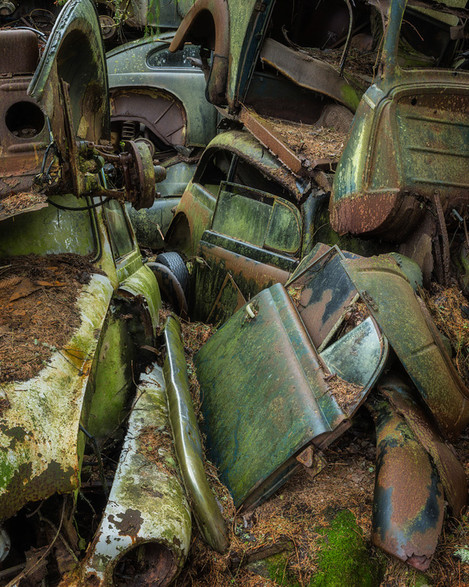
I have visited this car cemetery on the border to Norway twice. It is a real heaven for lovers of chaotic intimate landscapes. It is just fantastic place where you can to depict the collision between decaying machinery and the natural world with a camera in your hand. This pile of green cars, enhanced with a rusty red patina, were organised in an almost cubistic way. I was totally blown away by the beauty and the complexity of this bizarre constellation. I used a Nikon D800E with a Zeiss 35mm:1.4 and used focus stacking with 3 exposures at f11 to get everything nicely in focus.
”Cubismo", Iceland, July 2015.
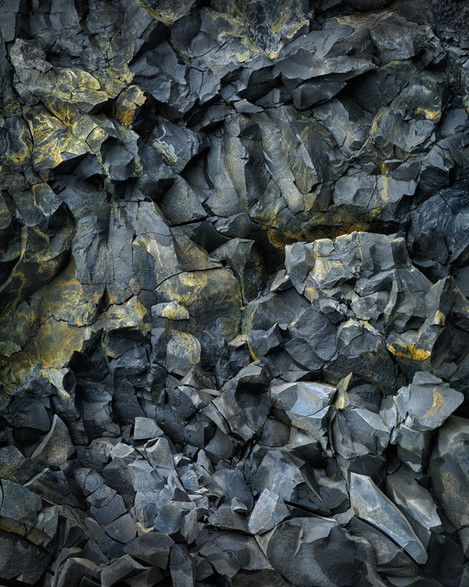
Another attempt in the cubistic style. Always when I shoot basalt rock formations my thought goes to Georges Braque and his cubism. I found this composition specially cubistic in its constellation. There are, like the previous image, only two colours. There is yellow and different shades of blue-grey, which are each others colour antipodes. The soft light from overcast conditions is sculpturing the prism like rock pieces in a full tonal scale. I used a Hasselblad H3DII-50 with a HC 210mm lens.
”Mesquite”, Death Valley, February 1999.
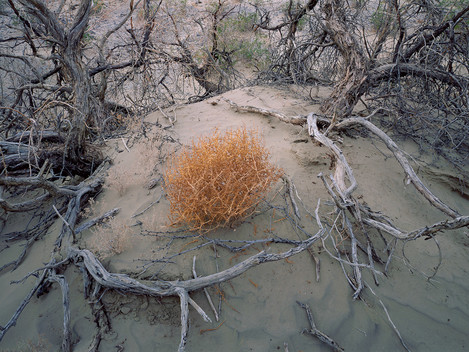
This morning I had been shooting the sunrise over the sand dunes of Mesquite Flats. On my way back to the car I passed through this shrubbery of Mesquite bushes. In the middle the bushes I found a trapped tumble weed. Its orange colour contrasted nicely against the grey surroundings and shone like a stop signal against me. At the same time the rising sun was blocked by some passing clouds which made the light soft and cooperative. I immediately put my tripod down and I worked as fast as possible, composing and adjusting my view camera and managed to take the picture before the sun came out of the clouds. I was only able to expose one sheet of Velvia 50 with my Linhof Technikardan 4x5” camera and Schneider Super-Angulon 90mm lens, before the sun came out of the clouds and the light got too hard.
”Breaking Wave”, Snaefellsnes, Iceland, June 2015.
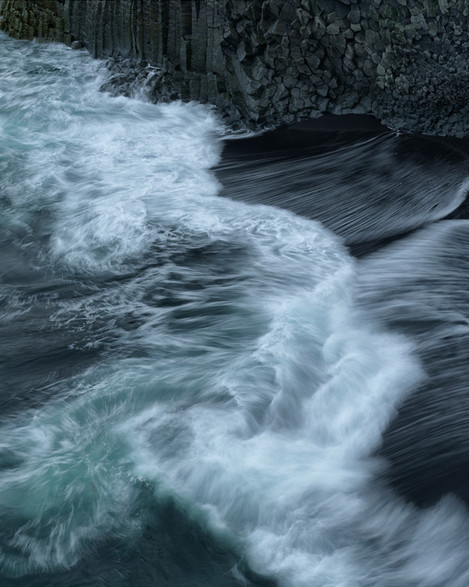
Along the western coastline of Snaefellsnes you can get a nice elevated view of waves crashing against black volcanic rock. I wanted a moderate motion blur and experimented with different shutter speeds. I found 1/2 second being the one I liked the best. The combination of motion without loosing the structure of the water, was what I was looking for. I shot maybe 50 different shots with this composition and picked this one as my favourite. As often in my case, I used grey weather light to ensure a soft contrast and a still getting a full tonal scale in the final file. I used a Hasselblad H3DII-50 and the standard HC80mm lens.
”Willows”, Steninge, Uppland, Sweden, December 2014.
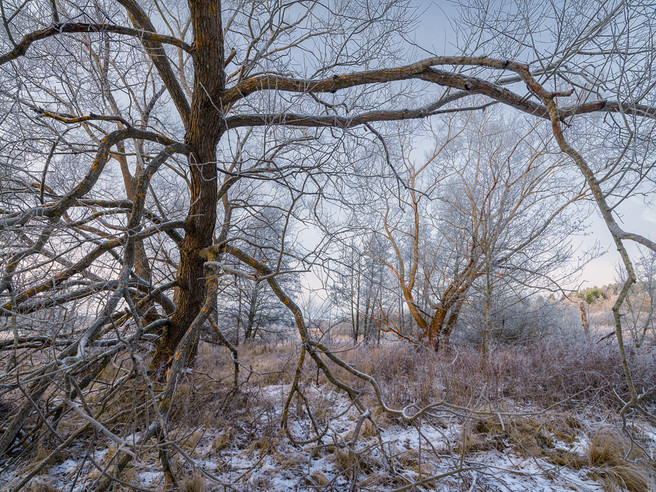
Soft winter sunlight is probably the only direct sunlight I like to work with when I am shooting intimate landscapes. The tired sun was just above the horizon and its rays was filtered through the atmosphere. This gave me a warm light with just a little extra contrast. In this case the contribution was a change in colour temperature between the foreground and the background. I worked a long time with this composition. Since I used a 15mm super-wideangle, every single centimetre in position made a different composition. I wanted the corners to have branches coming out as diagonals. Something I often look for. This way the composition stabilises even the most chaotic shrubberies. This was about as chaotic as it gets. The sunlit willow however, was framed by the tree in the foreground and with the corners in place the image still got some order. I used a Nikon D800E and a Zeiss 15mm shot at f16. The closest branches were very close and I wanted everything to be sharp, hence the stopping down to f16.
”Ice Cosmos”, Svartå, Sweden, January 2012.

In 2012 there were very special weather conditions in the middle of Sweden. Low temperatures and no snow. This made up for great ices on the lakes. Perfect for long distance skating, but also for close up photography. The ices were filled with millions of air bubbles and looking through macro lens there were a whole universes in there. The bubbles looked like planets and there were even bubbles inside the bubbles. To get this image the way I wanted, with depth of field enough to show all bubbles fairly sharp, I needed to use focus stacking. I made 4 focusings at f16 and blended the files in Helicon Focus software to get a single sharp file. I used a Hassled H3DII-50 and a HC120 macro lens.
”Burgundy Forest”, Gevrey-Chambertin, France, October 2013.
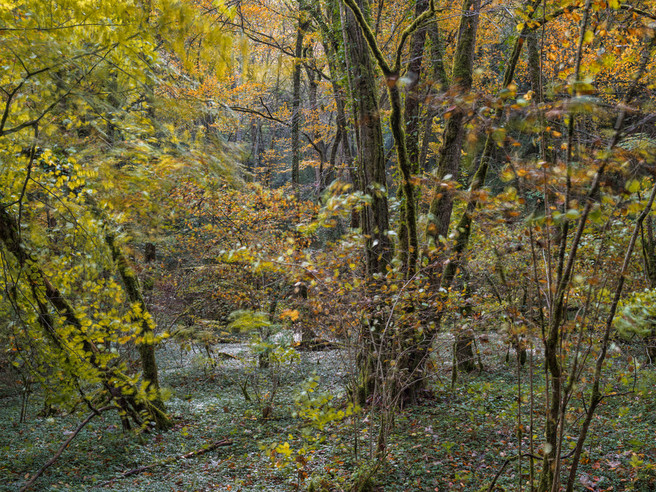
I often want my images to have everything in them sharp except for water. In this case I was in a Burgundy forest right after two barrel tastings of the excellent 2012 vintage. The wind was blowing really hard, making a sharp image impossible. My alternative was either to give up and go home for further wine drinking or trying to do something with my camera. I decided to go for the second and more sober alternative and to use the power of the wind to blur as many as possible of the trees branches in my composition. I therefore waited for the maximum wind and used even the lower ISO setting minus 1 stop to ISO 50 on my Nikon D800E. This gave me a shutter speed of 0,6 seconds at f16. Enough to get the moving branches to come out blurred. The lens was a Zeiss 35mm 1.4.

